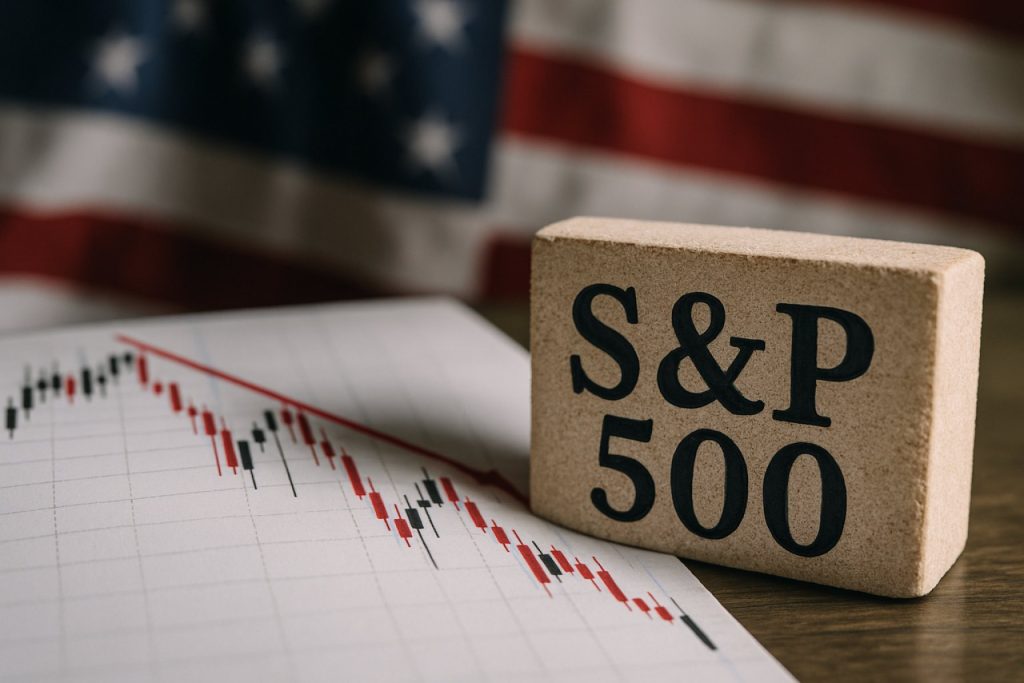
- S&P 500 correlation dropped sharply from 0.7 to 0.16, signaling less synchronized stock movements.
- Macroeconomic headlines no longer dictate the entire market; company fundamentals are regaining importance.
- Stock pickers now face greater opportunities and risks, as individual company stories drive market moves.
- Market sentiment is stabilizing, with nuanced reactions to mixed economic and earnings data.
- This shift marks a maturing market phase, rewarding careful research and insight over broad macro plays.
For months, the S&P 500 moved as one, a vast fleet of stocks rising and plunging in near-perfect synchrony. As fresh waves of tariff news hit the headlines this spring, the blue-chip index’s components surged closer together, their price changes echoing each other in a chorus as Wall Street braced itself for the next shock from Washington or Beijing.
April brought a crescendo—stock movements soared in unison, with the one-month correlation spiraling to 0.7, a rare feat seen only during extreme market turbulence, like the height of the pandemic or the Federal Reserve’s recent interest rate hikes. For investors, it felt as if macroeconomic headlines held the market strings, and any whisper of a policy shift sent every company reeling in the same direction.
But this tightly-wound moment may be quietly unraveling. As President Donald Trump eased back the most aggressive tariff threats, that synchronized dance among America’s largest stocks has lost its rhythm. The S&P 500’s correlation has tumbled to a mere 0.16, a level suggesting that individual stories are once again mattering more than sweeping global drama. Where once a single political announcement could send the entire index veering, now the market’s movements are nuanced, intricate, and ultimately unpredictable.
- Company fundamentals are taking the stage, drawing the market’s attention away from broad economic fears.
- Stock pickers have more breathing room, as sector- and company-specific news offers new opportunities — and risks.
- The headlines still matter, but now they differentiate winning and losing stocks instead of pulling everyone together in panic or euphoria.
“After two months of macro-dominated markets, we’re likely to continue seeing markets, economic outlooks and sentiment stabilize,” says Michael Kantrowitz, chief investment strategist at Piper Sandler. Mixed data—on jobs, consumer demand, company profits—has returned nuance to the trading floor. Analysts believe this could be a sign of maturation, as investors shift their gaze from rumblings in Washington to the granular realities reported in earnings calls and quarterly filings.
For seasoned investors and curious newcomers alike, the S&P 500’s muted chorus means renewed emphasis on insight, research, and discipline. The market’s narrative is now being shaped by the individual tales of innovation, resilience, and transformation playing out inside America’s corporate boardrooms.
In this new era, a single macro headline no longer tugs every stock along for the ride— and those who read between the lines, diving deep into fundamentals, may discover the next wave of opportunity.
The Surprising Downside of Market Independence: What Investors Need to Know!
-
Pro: More Opportunities for Stock Pickers
With the S&P 500 correlation falling, discerning investors can capitalize on stock-specific news rather than being swept along by broad market moves.
-
Pro: Company Fundamentals Take Center Stage
The market now rewards sound business models and innovation, shifting focus from macroeconomic shocks to fundamentals, as analysts at Piper Sandler note.
-
Con: Increased Complexity and Unpredictability
Lower correlation makes it harder to anticipate trends, and diversification benefits may be harder to realize as stock-specific risks rise.
-
Limitation: Volatility May Not Disappear
While macro headlines have less influence, unexpected company developments or sector shocks can still trigger sharp moves in subsets of the market.
-
Controversy: Is This Stability or Just the Calm Before Another Storm?
Some experts question whether the market’s individual focus will last—or if a return of economic turbulence will cause another surge in correlation among stocks.
Wall Street’s Next Act: Shocking Predictions for S&P 500 Trends Ahead!
-
Decentralized Market Movements:
Experts predict the days of tightly-linked stock swings are fading. As macroeconomic shocks become less dominant, expect a continued decrease in correlation within the S&P 500. This trend is forecast to foster a diverse landscape where individual stocks and sectors diverge—making deep research more important than ever.
-
Rise of Stock Pickers and Active Management:
Market conditions are evolving to favor those who dig deep. The fall in index-wide correlation is predicted to empower active managers and analytical investors, providing new opportunities for differentiation as company-specific news regains prominence. For detailed market outlooks, visit Piper Sandler.
-
Nuanced Reactions to Global Headlines:
Though macro headlines will still draw attention, analysts expect their impact will become more selective. Future years may see market surges and slumps focused on specific sectors, rewarding those able to quickly assess which companies are truly exposed.
-
Data-Driven and Fundamental Investing:
As financial news grows more complex, the importance of fundamental analysis is set to rise. Investors are forecast to place more trust in earnings reports, innovation pipelines, and balance sheets—making the S&P 500’s performance increasingly sophisticated.
-
Strategic Patience Will Pay Off:
The forecast suggests that rapid-fire trading will give way to more strategic, longer-term investing, as nuanced company narratives outshine headline-driven volatility. Those who cultivate patience—and stay informed—are likely to seize the best opportunities ahead.



